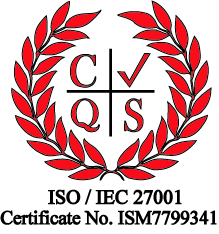It is difficult to see far into the future right now. How we work, connect with our teams, motivate our staff, and collaborate on projects has been changed over 2020, perhaps forever. For some, digital transformation has dropped down the agenda as more immediate and mission critical challenges have risen to the forefront.
But even with the latest round of government restrictions in place, other organisations are using the lessons learned from the 2008 financial crisis to streamline their operation and prepare themselves for whatever 2021 can throw at them.
Blended Working
One feature of the new normal looks likely to be blended working. It seems likely that many organisations will continue with a hybrid remote working after restrictions are lifted. It’s very hard to pinpoint a consensus view on the success and long-term legitimacy of remote working. Amongst staff, business leaders and even industry sectors, opinion is very much split based on personal experience.
Business leaders seem to either be seeing a negative impact on productivity and petitioning the government to lift restrictions, or are seeing similar levels or even improved productivity from staff alongside the cost savings and championing remote work as a long term strategy.
Remote fatigue
Similarly, with staff, around half seem to be suffering from video conference fatigue, find their daily routines that lack their usual structure and are missing colleagues and general human contact. But on the other side you have staff who love working from home, find they can use the flexibility to be more productive, enjoy the peace and quiet and the time saved commuting.
Individual views on remote working are so mixed because of varied personal circumstances such as number of people in the household, space to work, previous attitudes towards remote working. It’s also effected by the workspace and tools available. A member of staff used to working on 2x large screens, on a big desk with plenty of space may have really struggled switching to a small laptop on a kitchen table and be begging their boss to let them get back into the office. But conversely, someone who already had an equipped home office would not of encountered the same challenges and already be pre-disposed to working from home.
The Tools They’ve Got
Another factor in the success or failure, and the individual attitudes towards remote working are the tools that the business supplies to their staff.
Many workers have not been back to the office since lockdown began in March. And it hit so suddenly that many simply scooped up their laptop and notepad and headed home. IT departments were forced to roll out tools to keep the staff connected, often relying on free software such as Zoom to keep costs down.
The up rise of videoconferencing tools
One thing that has very noticeably changed over the summer and autumn is the approach to video conferences. In April and May, it was common to get the “up the nose” view, on a low-quality camera commonly found on budget enterprise laptops. Backgrounds were full of piles of laundry and the general clutter of a family home.
Cut to September, and we are now seeing more and more carefully chosen backgrounds, use of clever tools such as virtual backgrounds or background fading and a much more conscious effort in appearance with people putting up branded backgrounds or wearing a shirt with a company logo.
This demonstrates three things. Firstly, and most obviously, that the tools we use are evolving to meet our needs, as we’d expect. Secondly it demonstrates that people are becoming more comfortable with video conferencing technology and developing etiquettes and best practices.
And thirdly, it demonstrates that both staff and IT departments are recognising the importance of factors such as video and audio quality and supplying their staff with better quality tools and platforms to ensure they look professional and competent when speaking to key clients, investors and partners.
Looking Ahead
One of the big lessons learnt from the last financial crisis is that organisations that invested, made themselves more competitive and position themselves to emerge ahead of competitors when the markets began to stabilise.
Organisations are still facing many challenges trying to balance short term requirements to keep staff working and connected, against longer term planning in trying to stay flexible to tackle future issues and bring the collaboration tools and video conferencing platforms they’ve adopted to cope with lockdown, back into the office. Planned migrations from out of date platforms, protecting previous investments in meeting room technology and supported a potential hybrid working model are all serious headaches for IT departments operating on reduced budgets.
More information?
If your organisation is facing challenges such as these, come and have a chat with one of our experts at New Era. We can help you develop a collaboration strategy that helps you stay competitive now and in the future, as well as allowing you support any level of blended, hybrid or full remote working.

 Australia
Australia Canada
Canada LATAM
LATAM New Zealand
New Zealand UAE
UAE United States
United States








